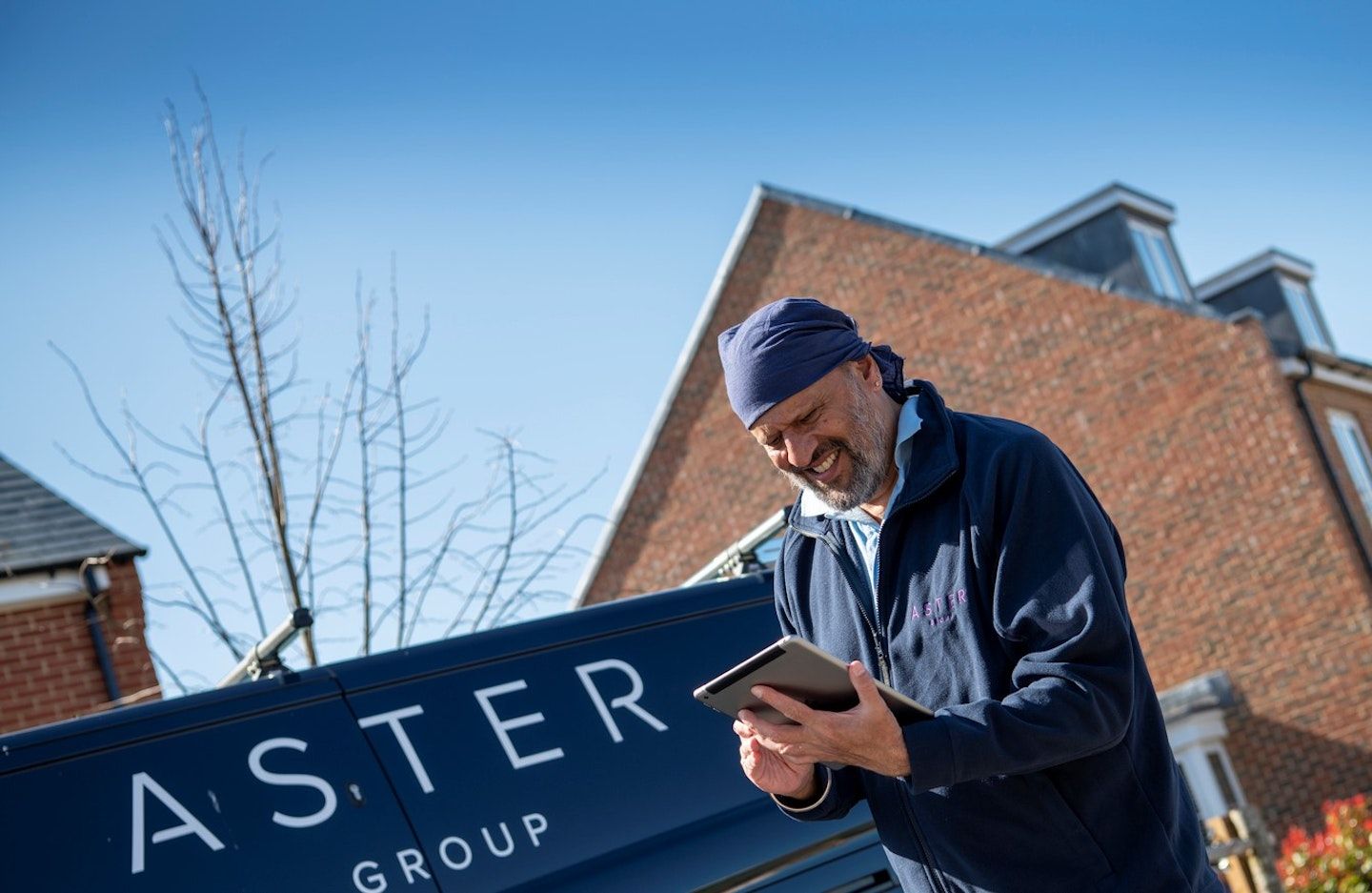The EX Files

Making EX accessible at Aster
When looking at organisations who are doing great things in the world of EX, attention often turns to the obvious suspects: the silicon-valley superstars, tech companies, and the digital cool kids on the block. This can make EX feel inaccessible, something that only certain types of organisations are embracing, which is why we want to share stories from the less obvious organisations, who are nonetheless leading the way in EX.
Aster are one the UK’s largest, and most innovative housing associations. Their corporate vision is that everyone has a home, which despite being a bold statement, is one everyone across their business is passionate about.
Their purpose is to improve people’s lives via reliable landlord services and a wide range of housing options in response to the housing crisis. And critically they recognise their core strengths are their people and their ethical approach, which is why EX is a key area of focus for the business.

The Story
Back in 2017, Aster made a conscious decision to change the way they
approached HR in order to drive forward their transformation agenda. They
took the decision to align the people, comms and IT teams under one
directorate. The driver for these changes was to move away from a
process-focused people approach, operating in silos, to develop and build
a people first culture. The HR team was disbanded and new workstreams
were established which included an EX-team with the recruitment of a
Head of EX, and EX partners, working across the organisation.
The approach Aster has taken to establish this new team, and way of working, is a great example of EX in practice. The team’s primary focus was to make Aster a great place to work and create an environment where their people could deliver their best work, which ever part of the organisation they worked in.
Early on they began by mapping the employee journey and evaluating the touchpoints to understand which moments mattered most to their people, and which areas would contribute to the delivery of the corporate strategy the most, to enable prioritisation. Their initial focus was their trade teams as they knew how they experienced life at Aster was very different to others who work less remotely. Right from the off they gathered feedback and evidence to guide their work.
Employee voice is at the heart of what they do, not only for the EX team, but to ensure it influences key business decisions. They talk about supporting big and little conversations and this is to ensure employees have their say. Sacha Harris, Head of EX at Aster, explains that their approach is still evolving:
Early on they began by mapping the employee journey and evaluating the touchpoints to understand which moments mattered most to their people, and which areas would contribute to the delivery of the corporate strategy the most, to enable prioritisation. Their initial focus was their trade teams as they knew how they experienced life at Aster was very different to others who work less remotely. Right from the off they gathered feedback and evidence to guide their work.
Employee voice is at the heart of what they do, not only for the EX team, but to ensure it influences key business decisions. They talk about supporting big and little conversations and this is to ensure employees have their say. Sacha Harris, Head of EX at Aster, explains that their approach is still evolving:
"We are learning as we go, testing and piloting new approaches all
with the aim of creating experiences that mean employees feel
valued, motivated and therefore want to deliver a great service to
our customers.
We have worked on areas such as how we onboard new employees, to building an award winning wellbeing strategy, to really ensuring employee voice makes an impact at all levels of the organisation.
We have worked with our trade teams on what’s important to them as well as creating opportunities to keep colleagues connected to the strategy and each other. It’s been interesting as we realised there were moments that mattered to our people that weren’t under our direct influence to change. For example, we quickly realised the role of leaders is critical to EX, so we have been working with the organisational development team on the role of the leader to enhance the EX.
We continue to build our leadership development programme with the employee experience at the heart.”
We have worked on areas such as how we onboard new employees, to building an award winning wellbeing strategy, to really ensuring employee voice makes an impact at all levels of the organisation.
We have worked with our trade teams on what’s important to them as well as creating opportunities to keep colleagues connected to the strategy and each other. It’s been interesting as we realised there were moments that mattered to our people that weren’t under our direct influence to change. For example, we quickly realised the role of leaders is critical to EX, so we have been working with the organisational development team on the role of the leader to enhance the EX.
We continue to build our leadership development programme with the employee experience at the heart.”
As Aster continues to review their offer, they want to make sure it’s as attractive and personalised as possible. They recognise what employees want will vary depending on who they are and their circumstances. They are working hard to ensure employees understand the whole offer and don’t just see it as a series of initiatives, so communication is key.
Sacha is refreshingly open about the learning the team has gone through over the past few years, as they experiment with different solutions to improve the EX. She is comfortable talking about their approach to EX as an ongoing journey, with both successes, and some failures they have learnt quickly from.
Both Sacha and the team embody an EX mindset, being curious and
empathic in the way they approach EX, as well as comfortable with
experimentation and continuous improvement. The team know it’s
important that the EX supports Aster’s vision and continues to evolve in a
world post covid as requirements and expectations of employees change.
Sacha also recognises that proving ROI is not always straight forward, and
the team are now measuring EX via Culture Amp (pulse) surveys to
achieve this. They hope to start using data to better shape experiences and
also begin to explore predictive analytics. Sacha explains that one of the
biggest differences in the way the team now approach EX is the switch
from a deficit-based approach i.e. focusing on what needs fixing, to a
strength-based approach, learning from what works.
Overall...
The Aster story is a great example of an organisation using an EX approach to make a difference to the business. The EX at Aster is helping the organisation with their business transformation by creating a positive experience where people are engaged, valued and motivated. And it is a fantastic example of EX in action.

